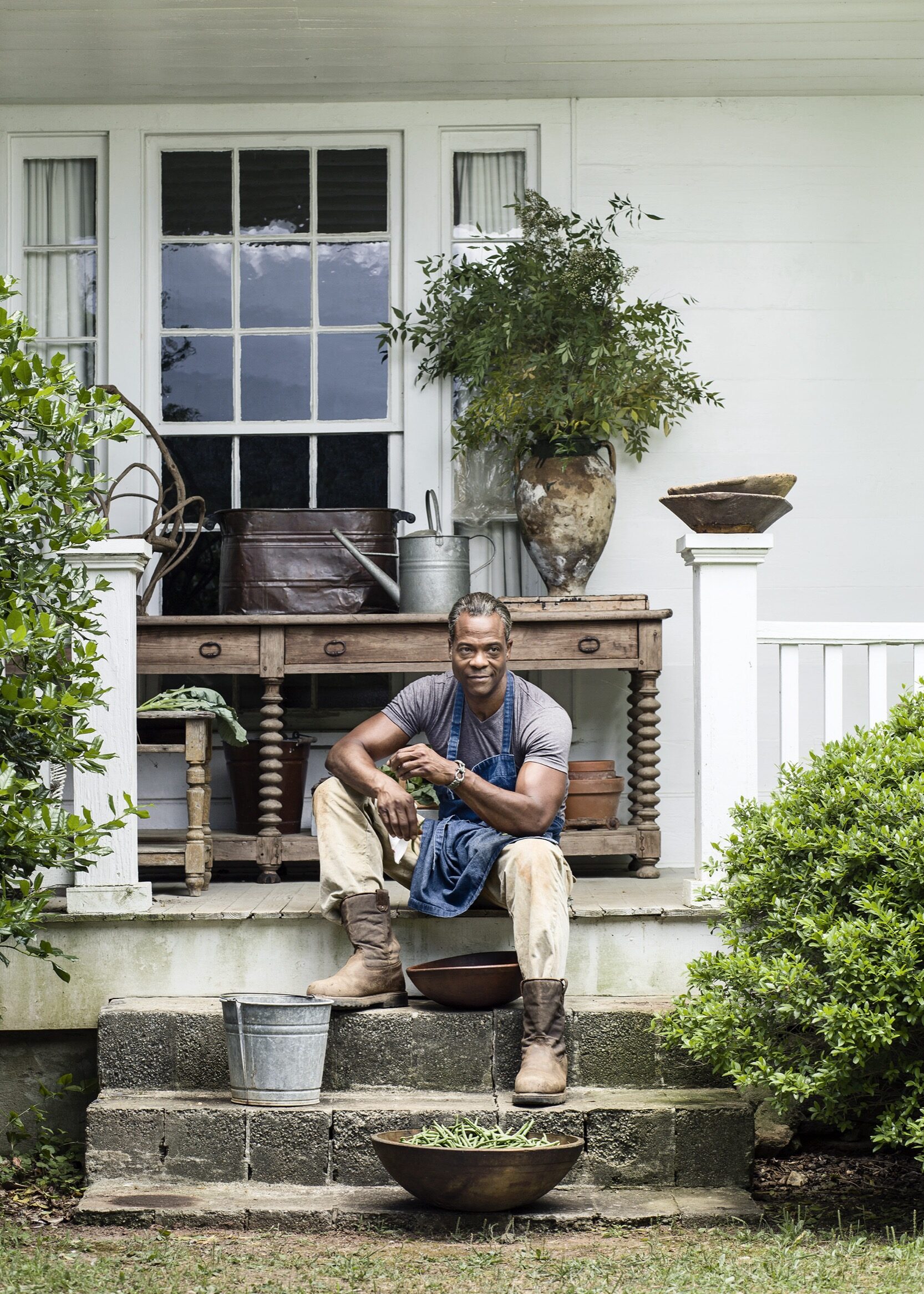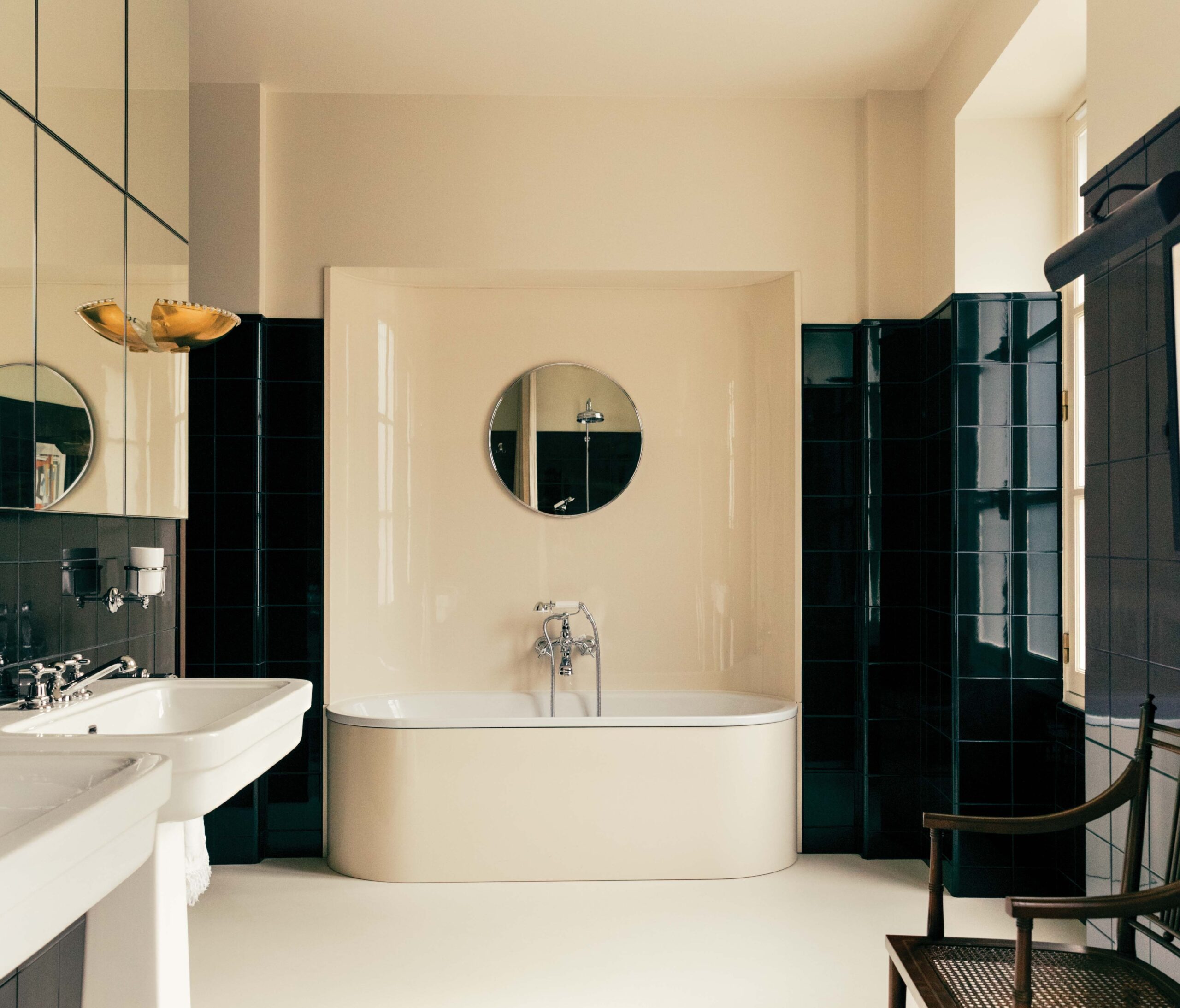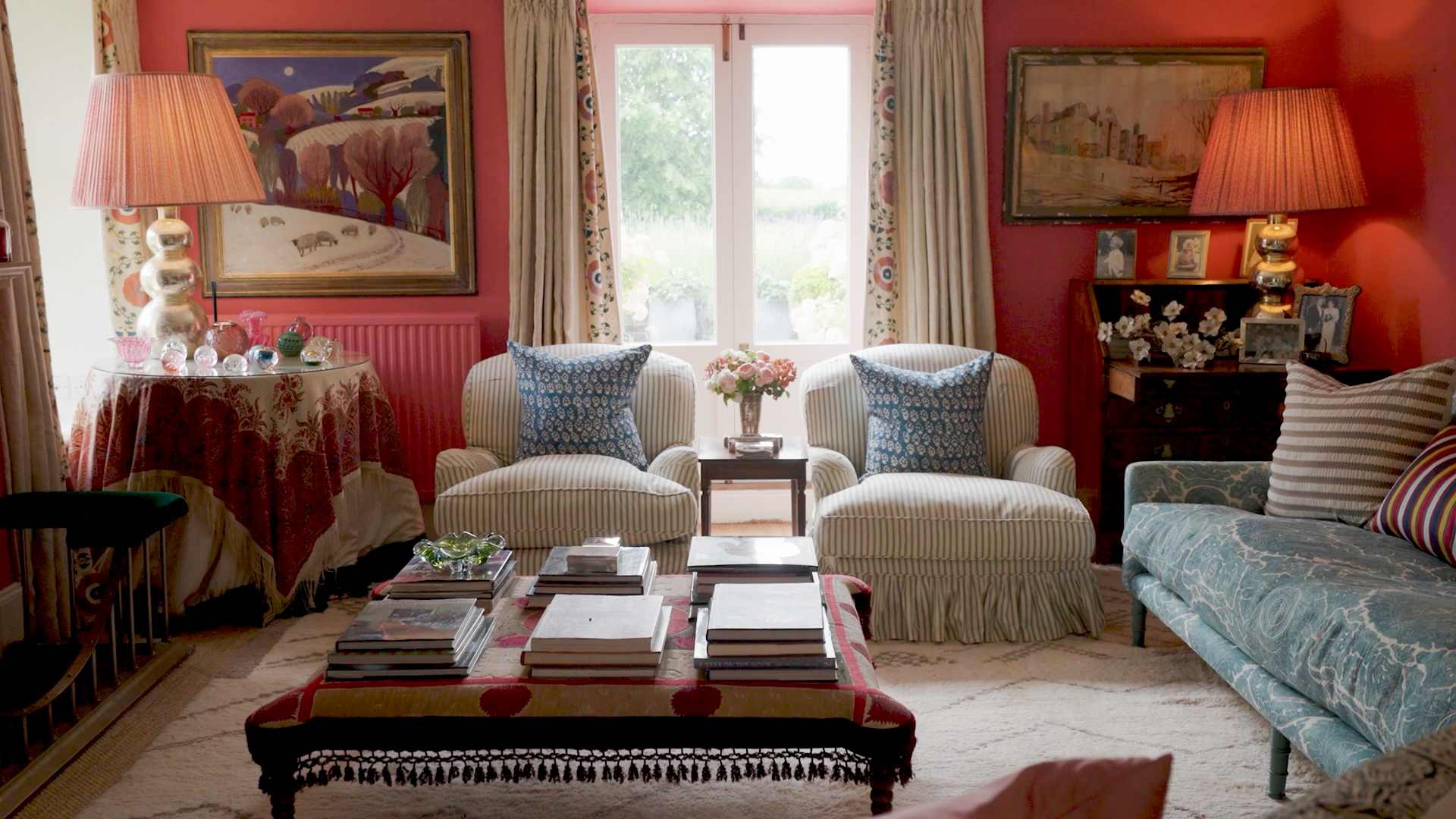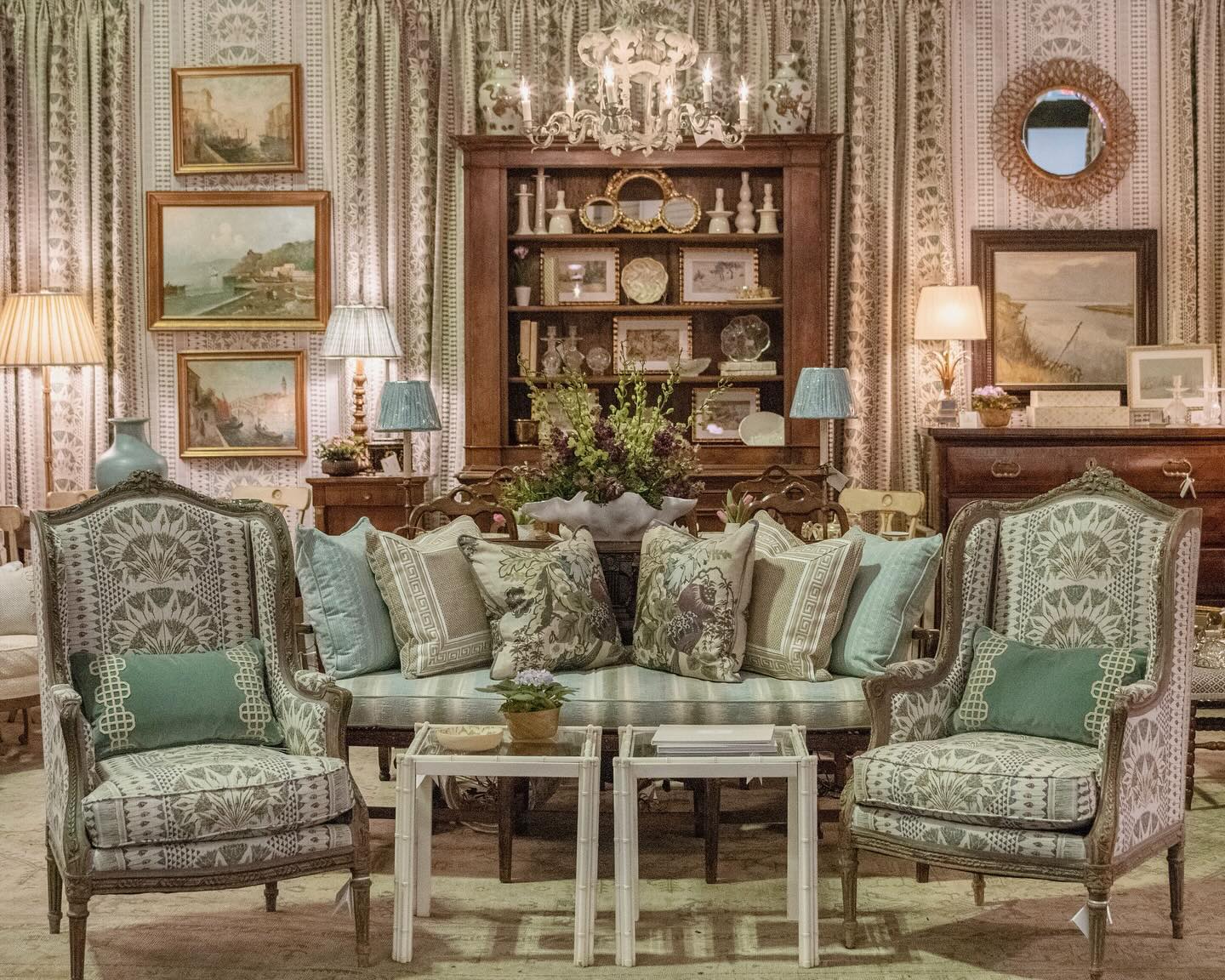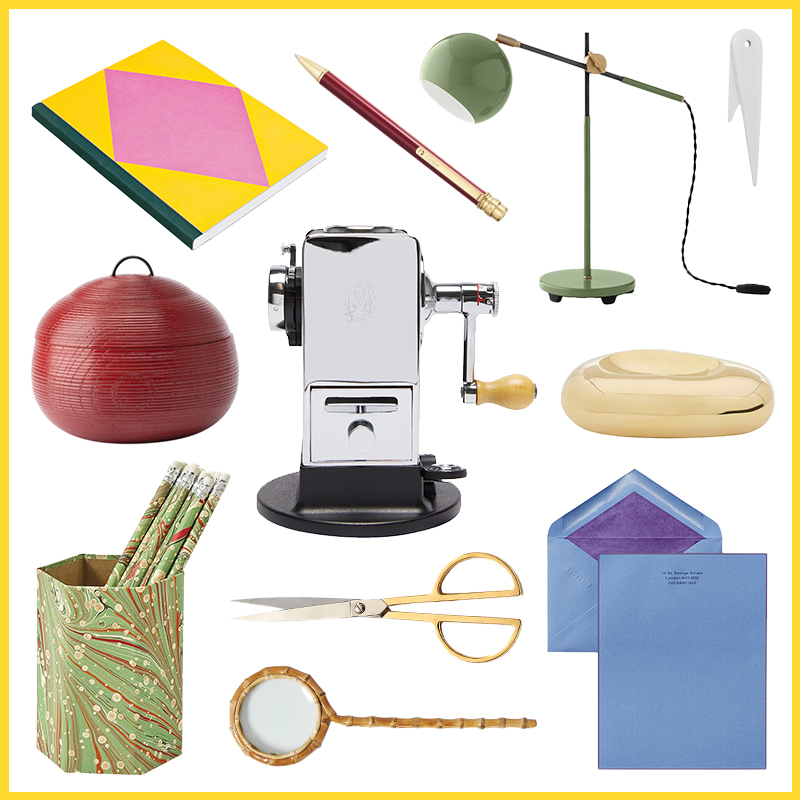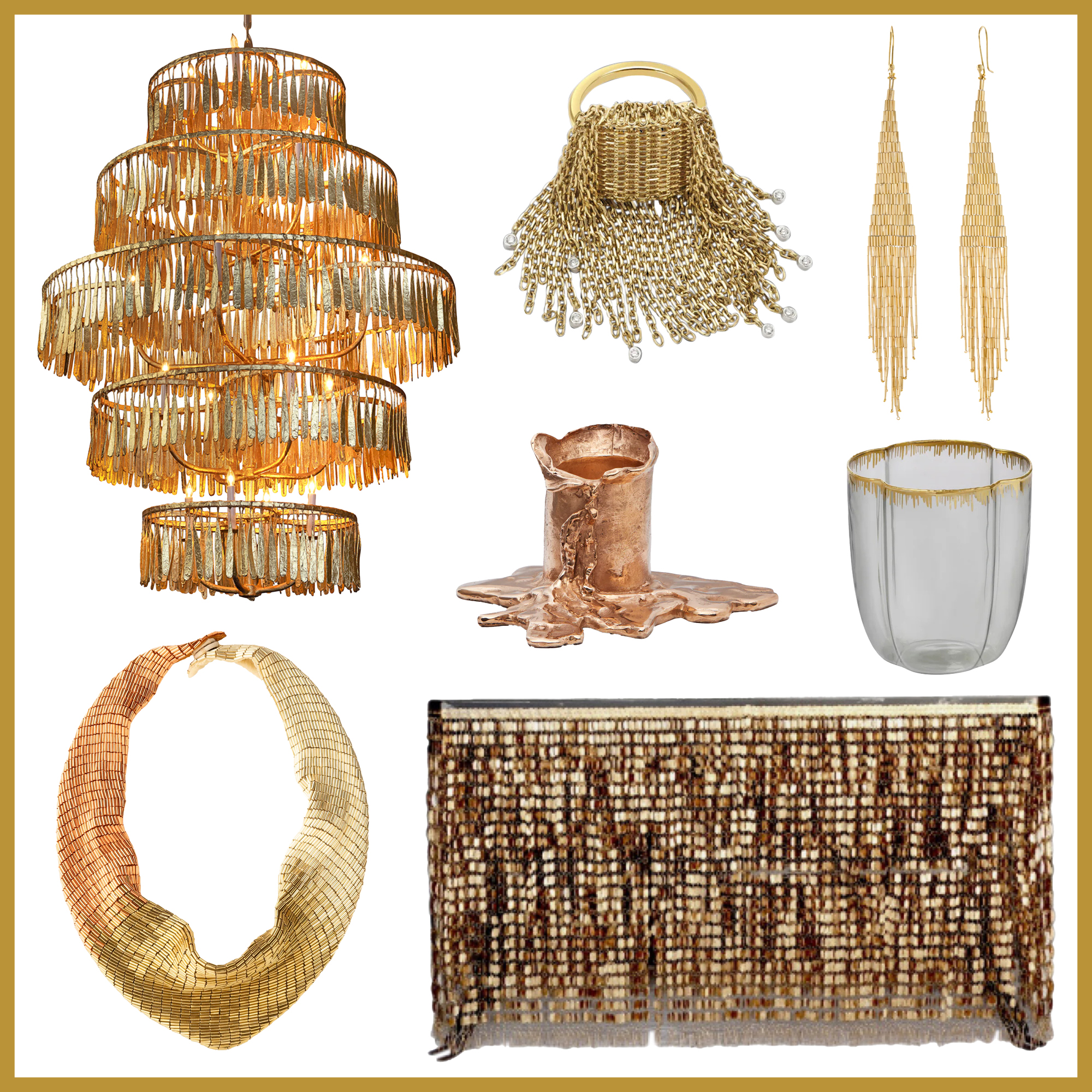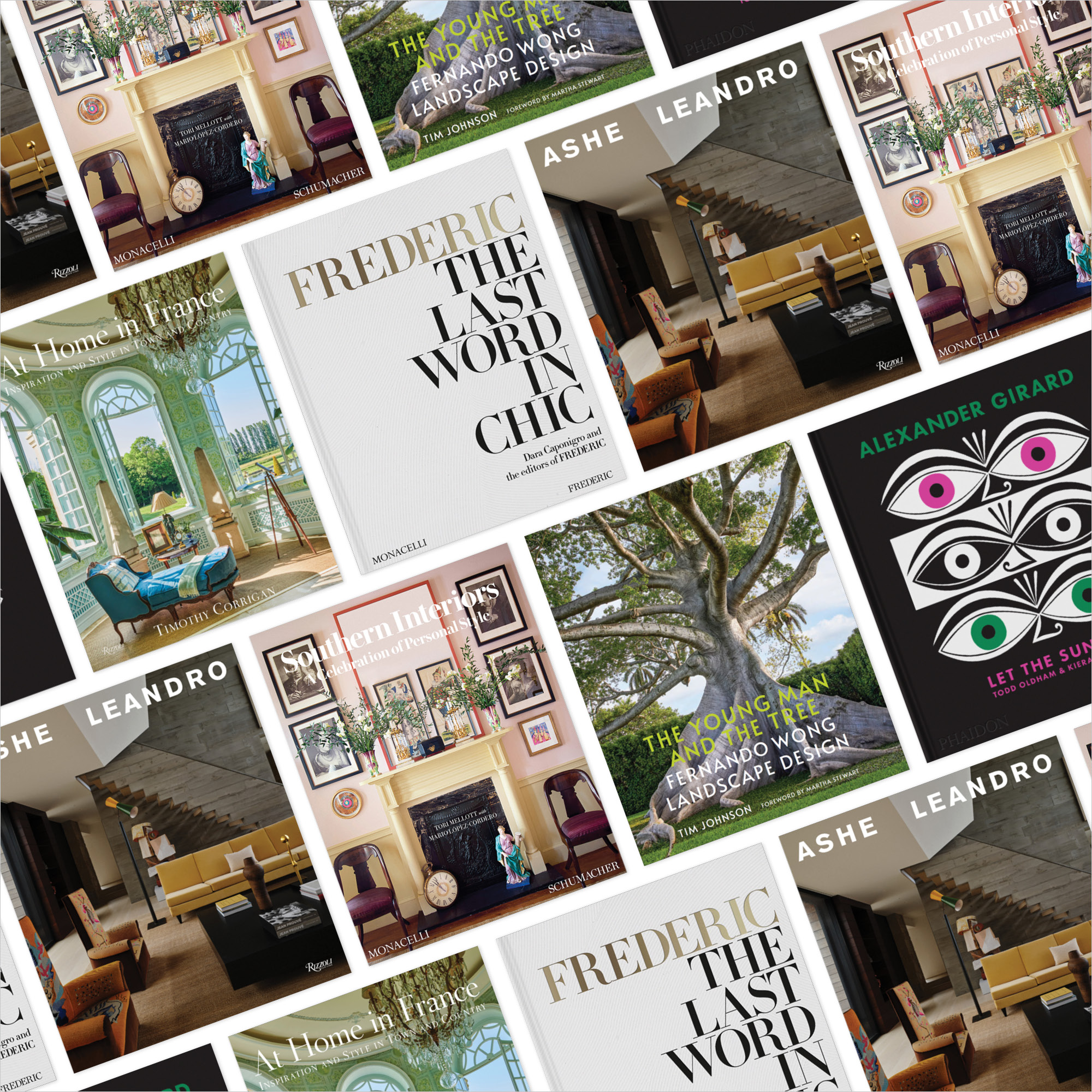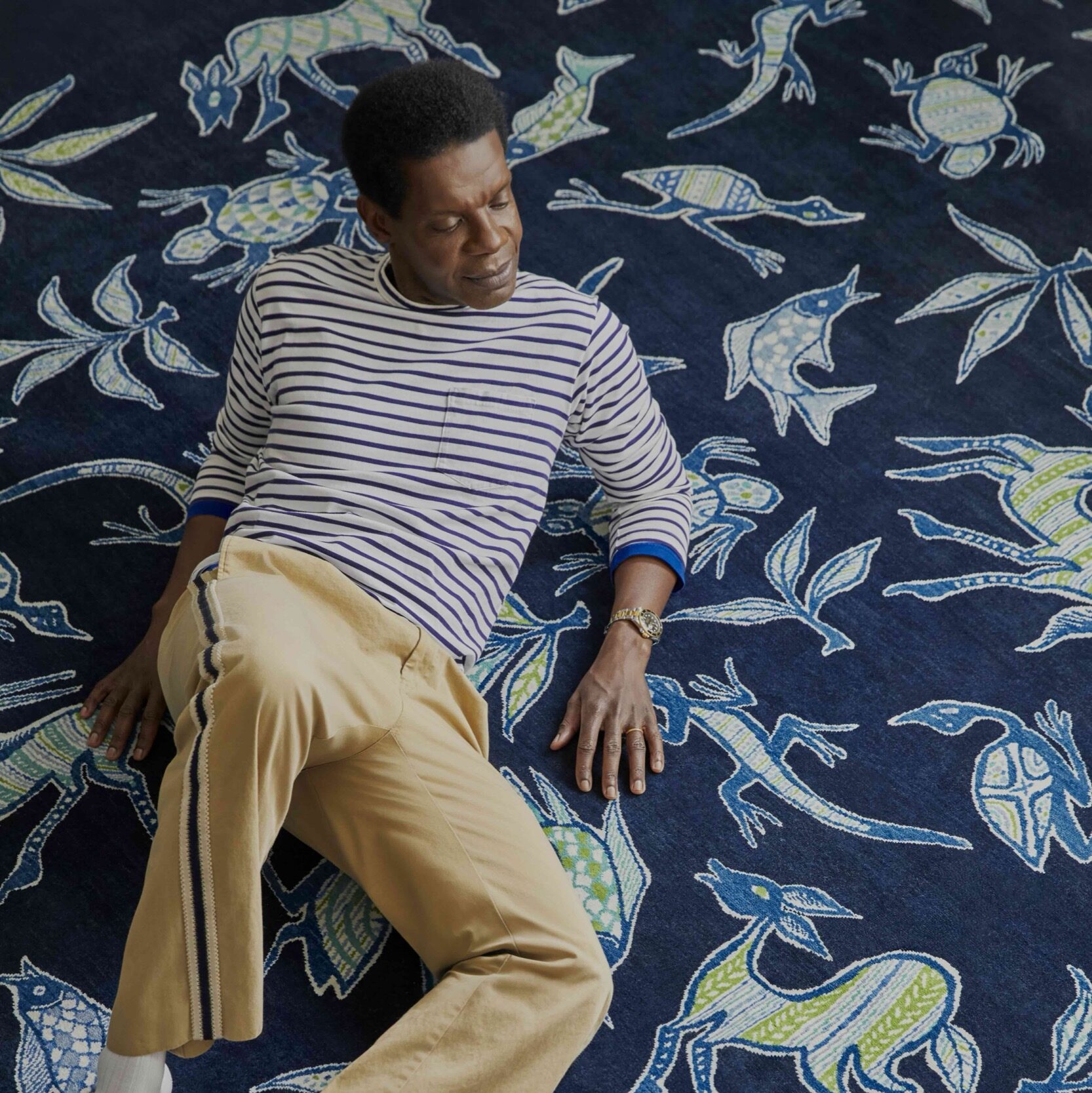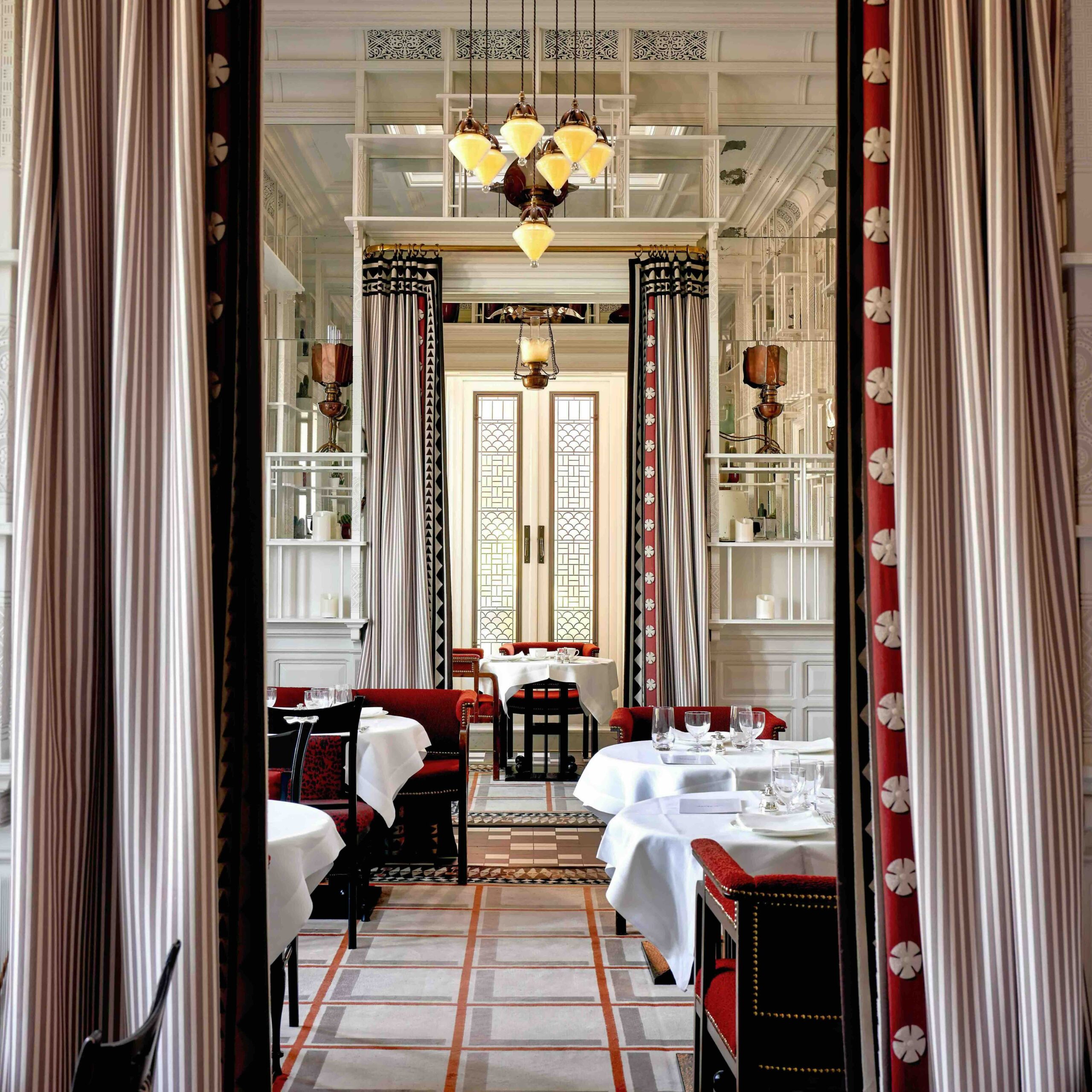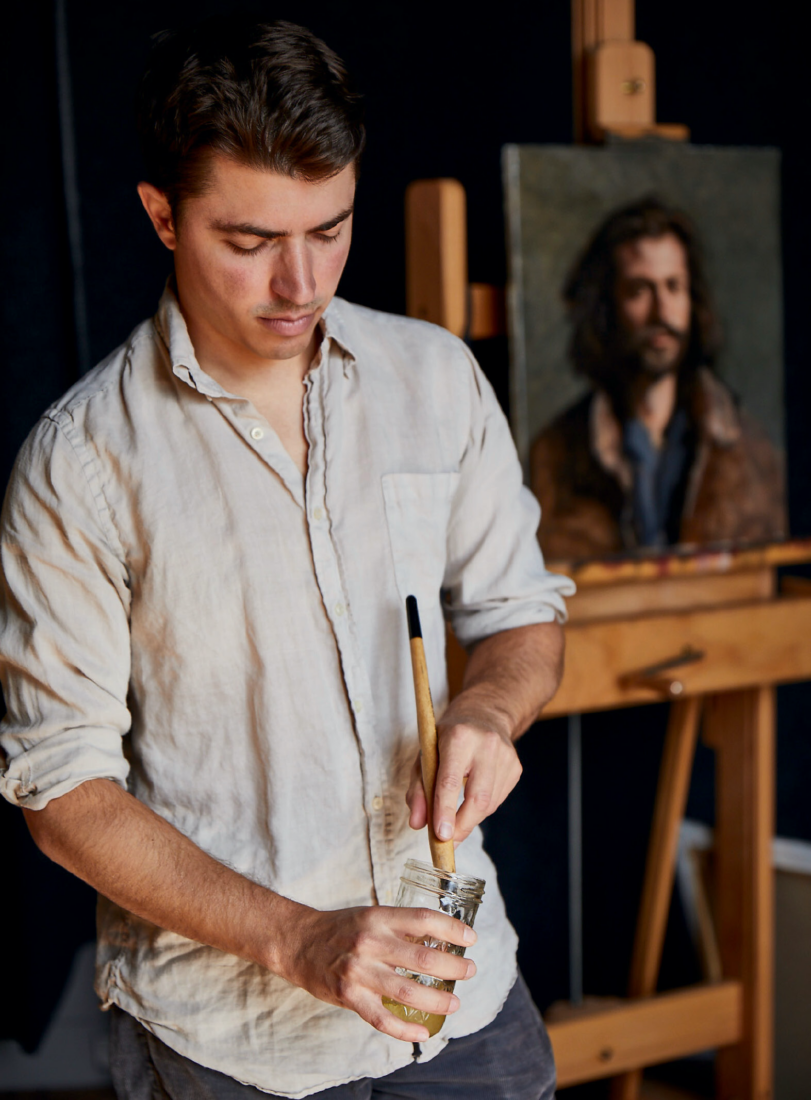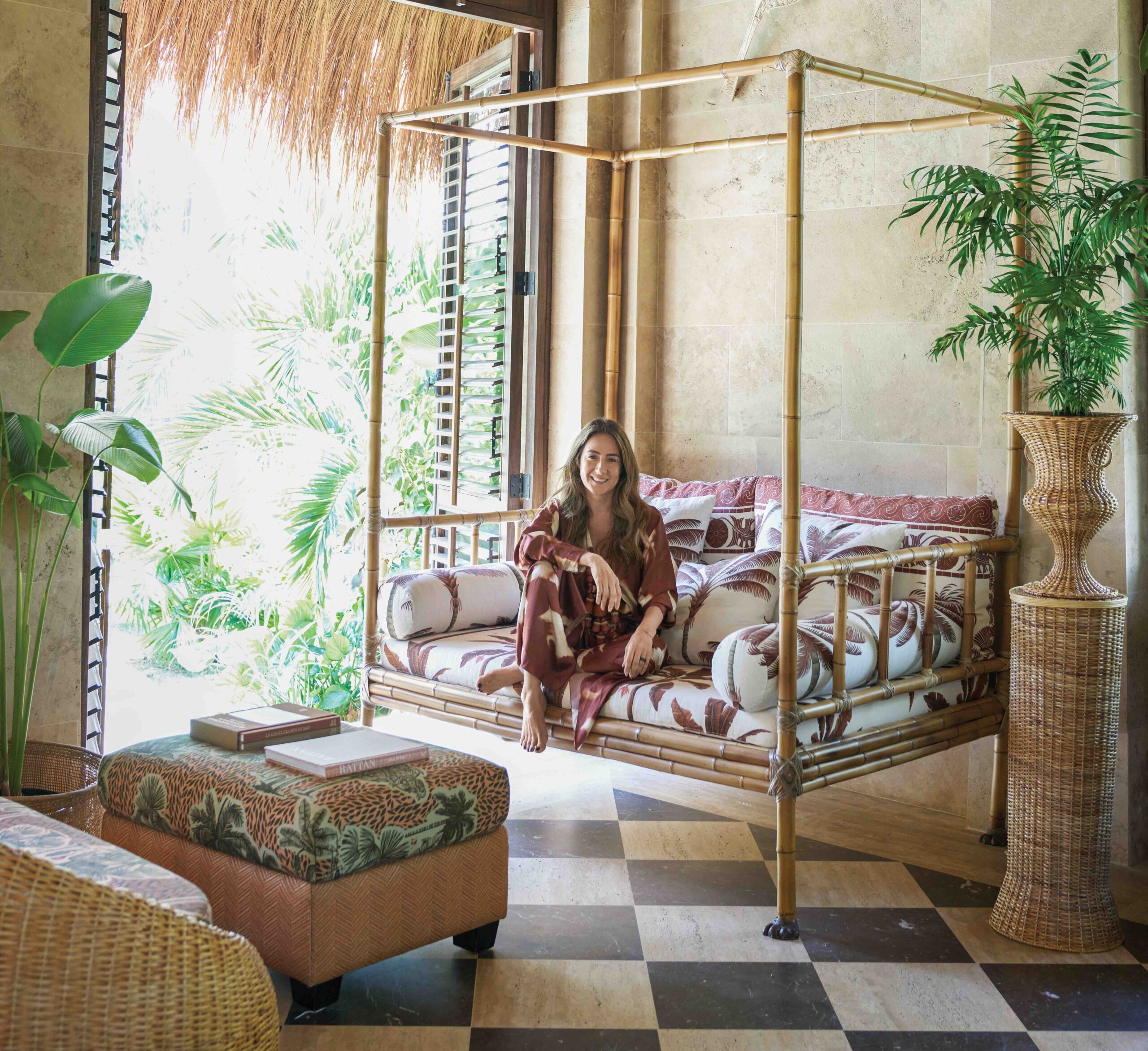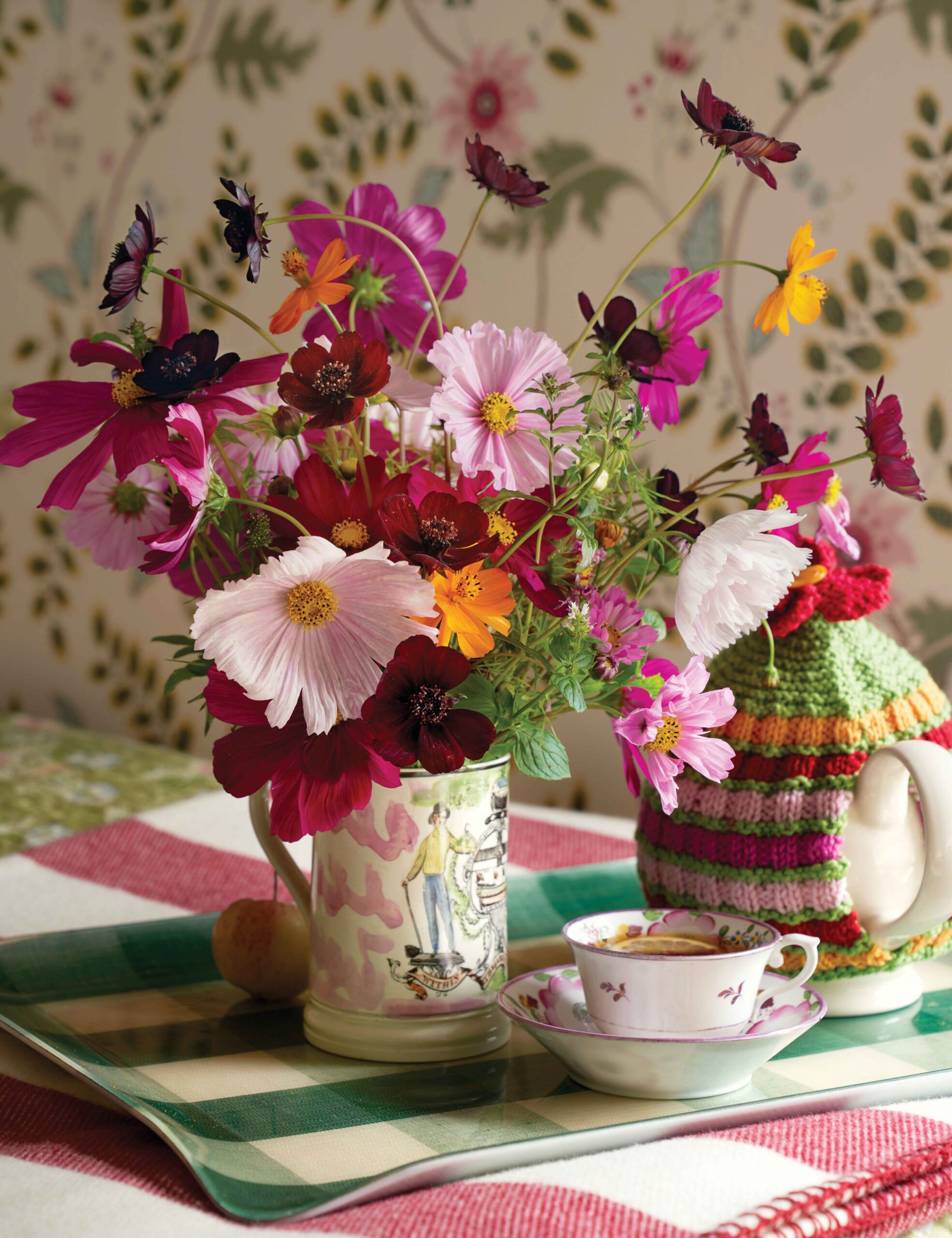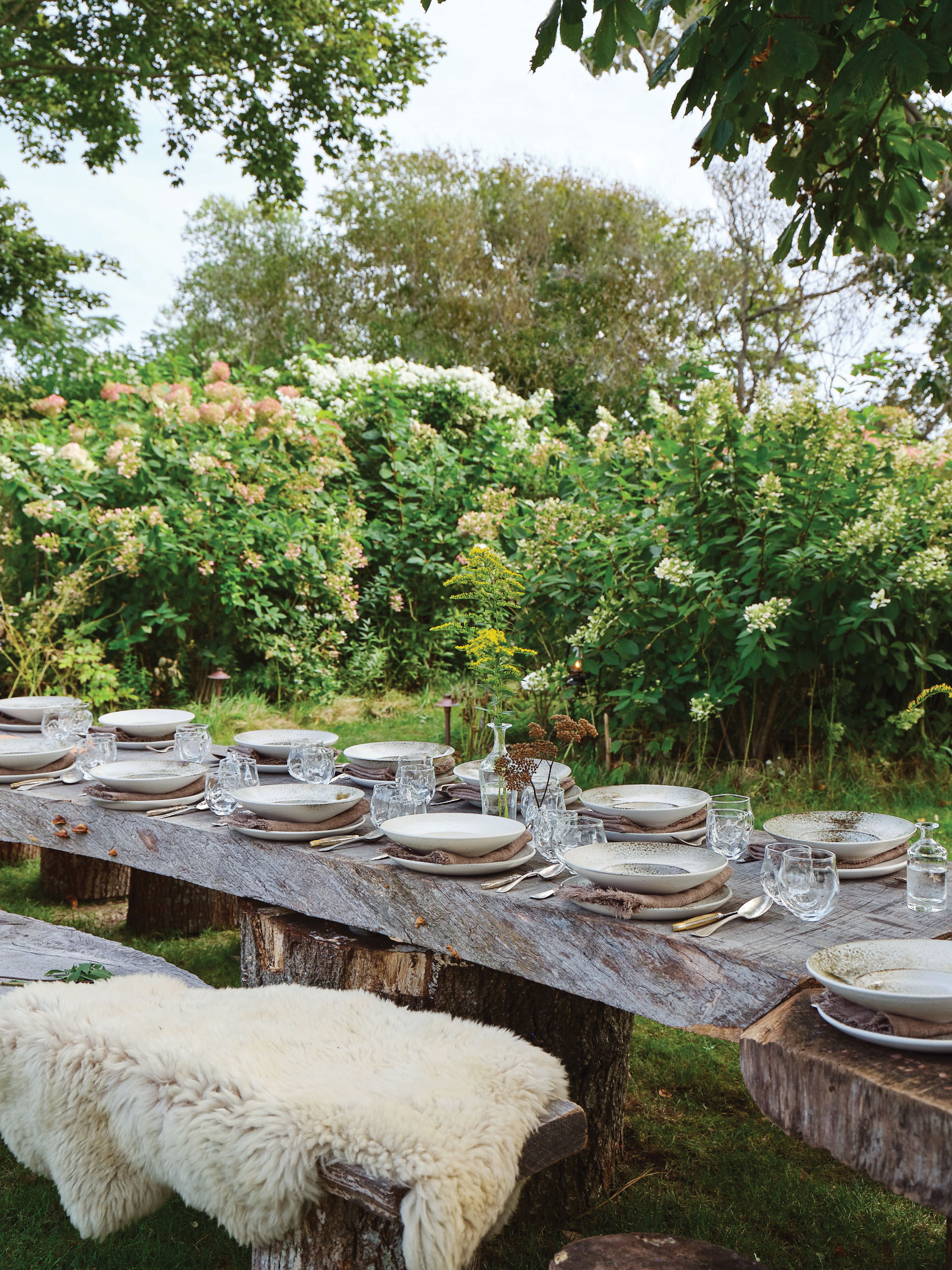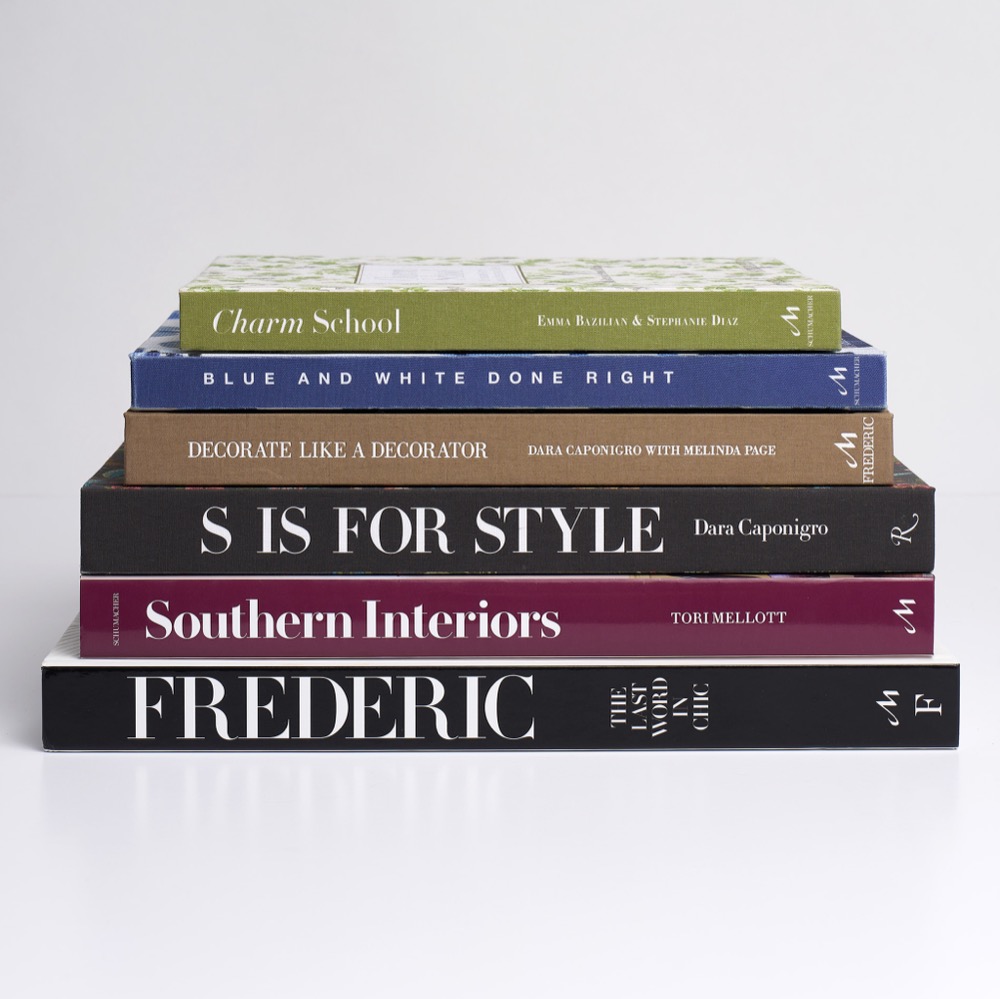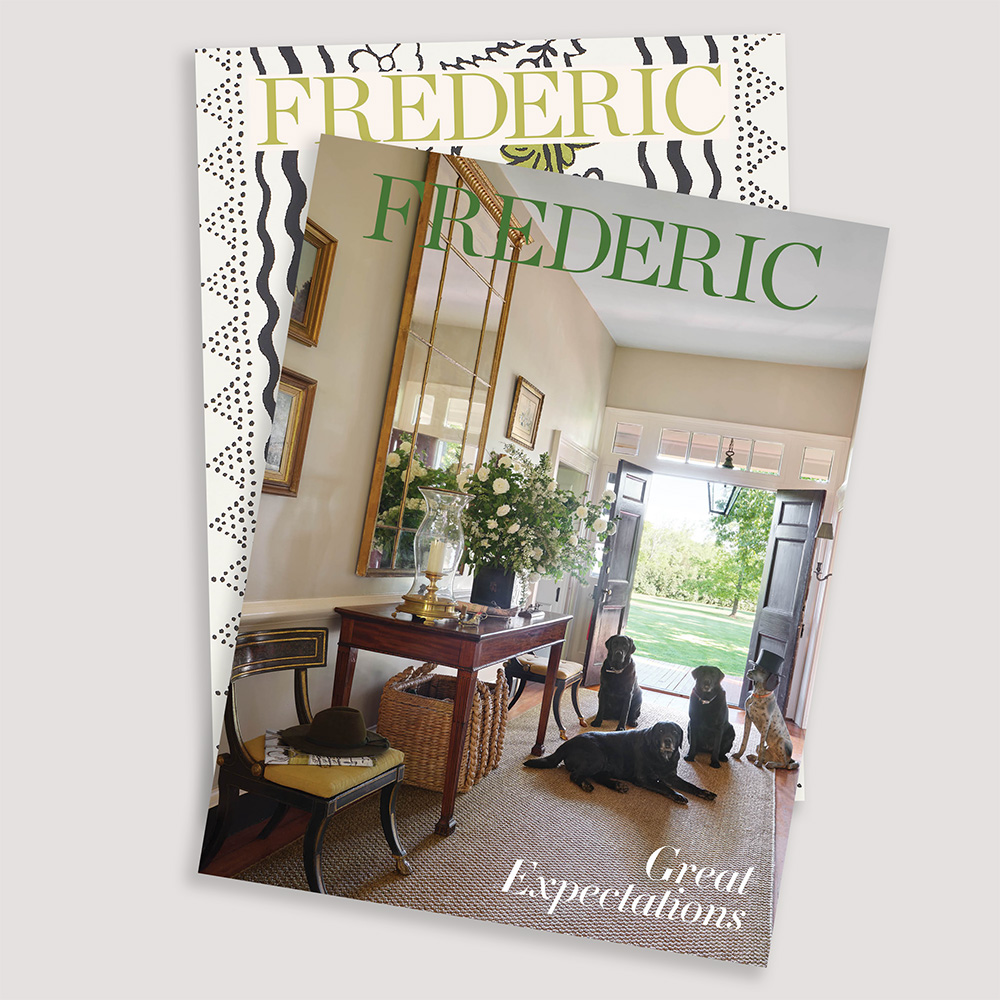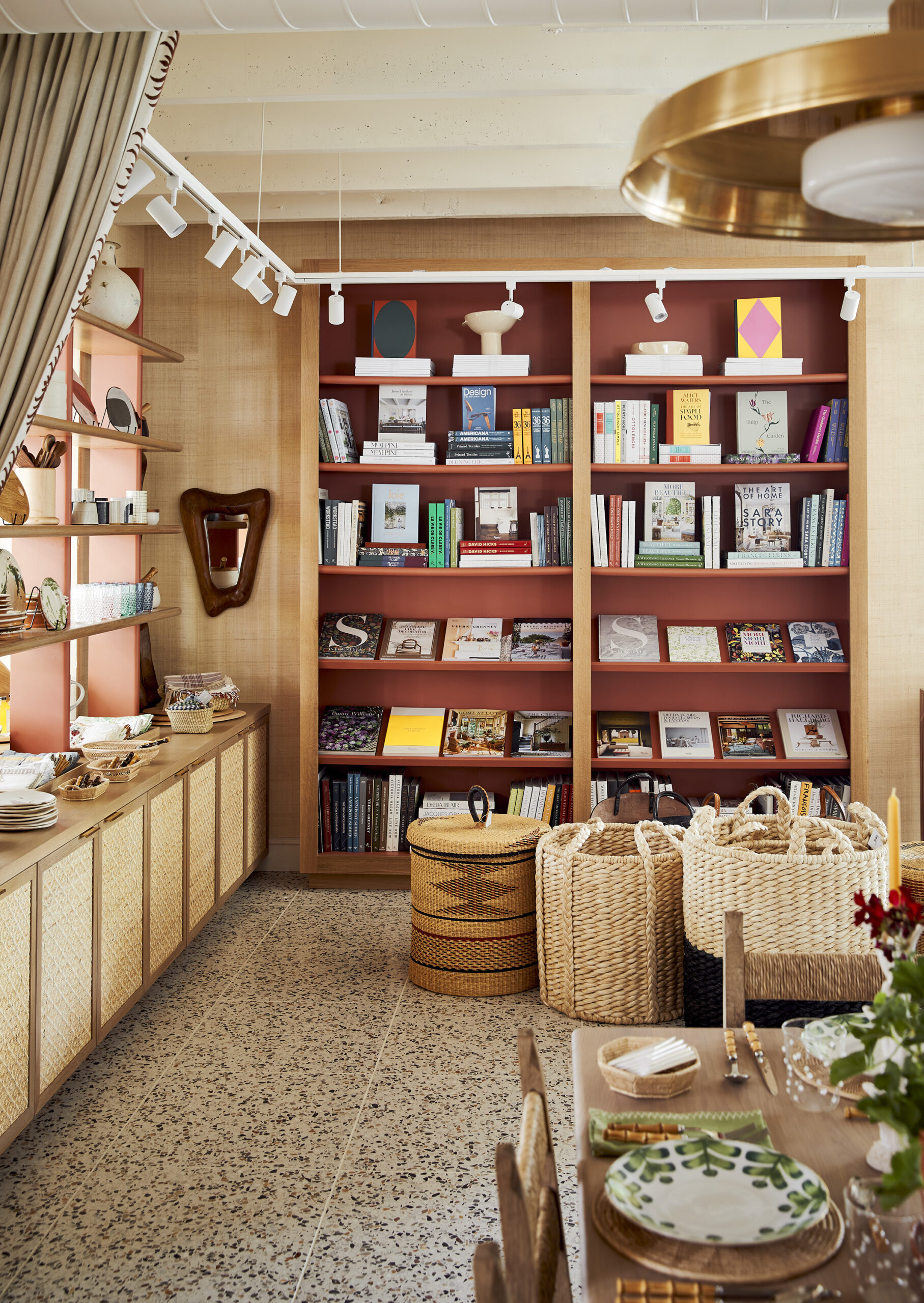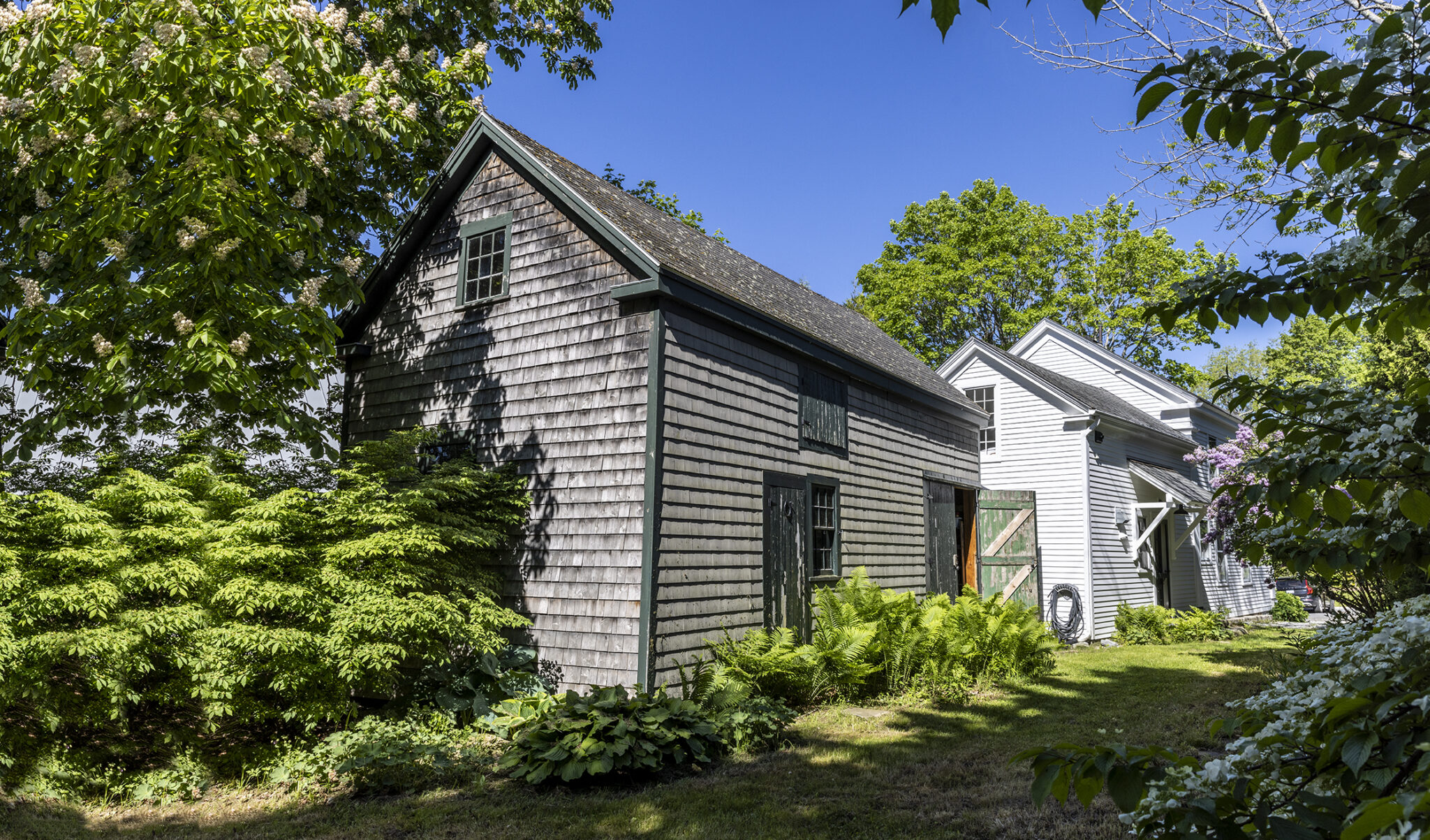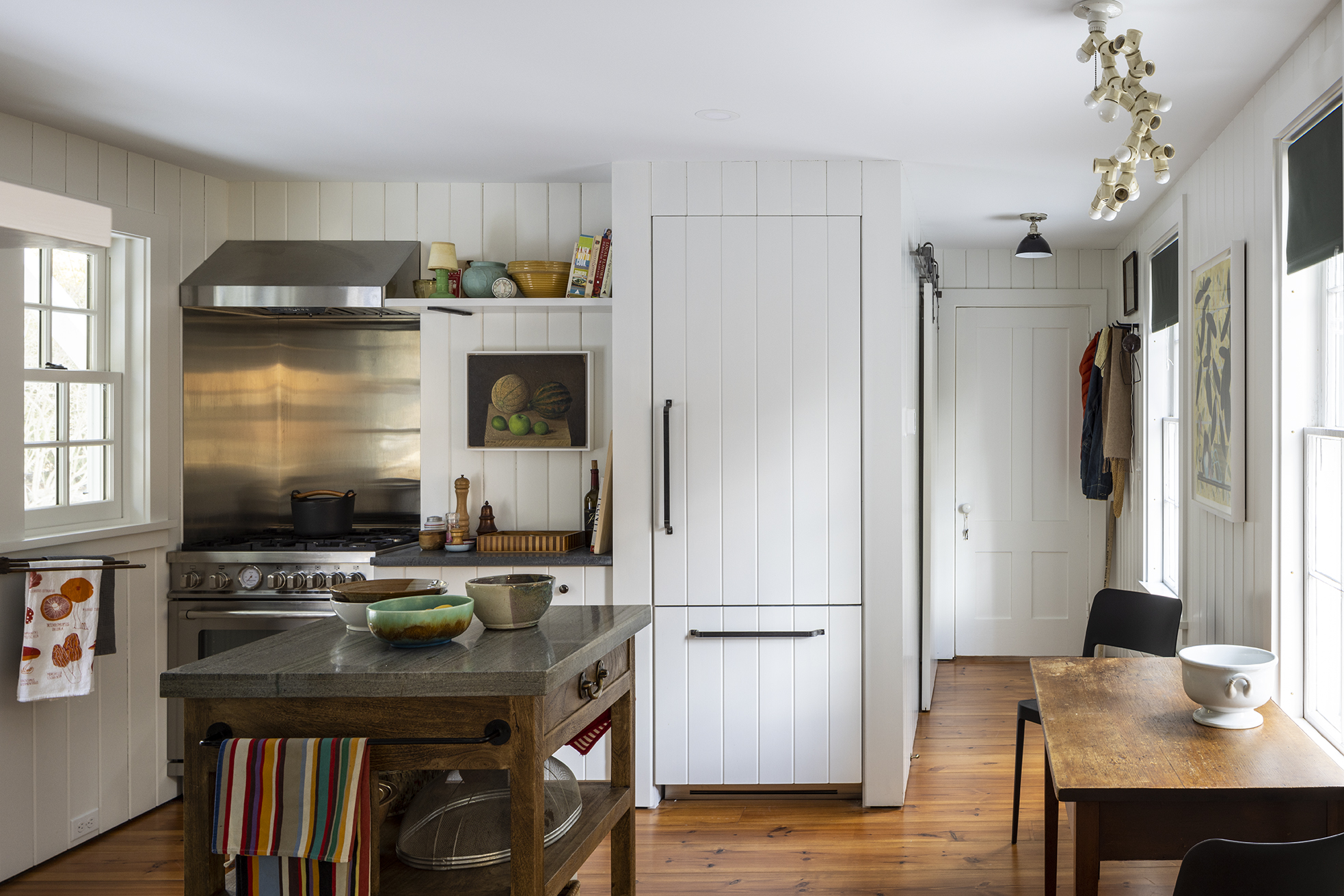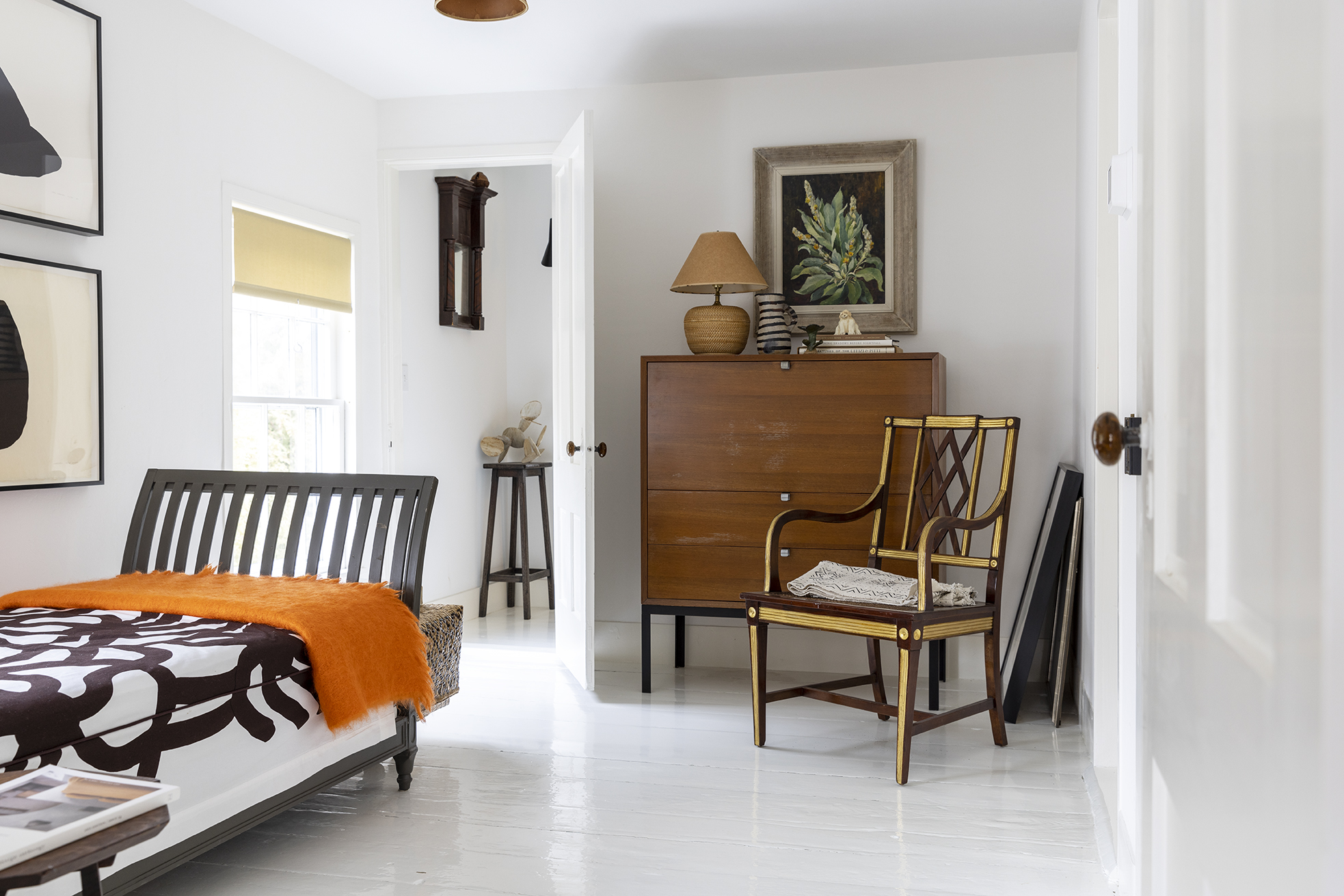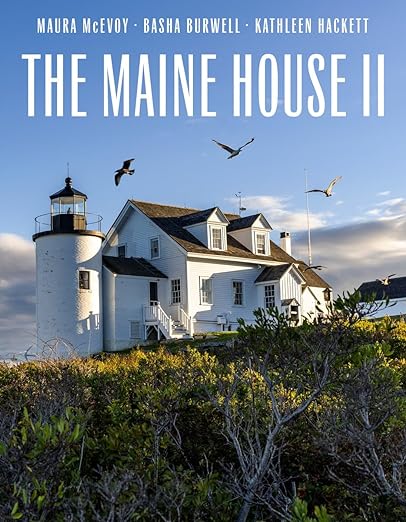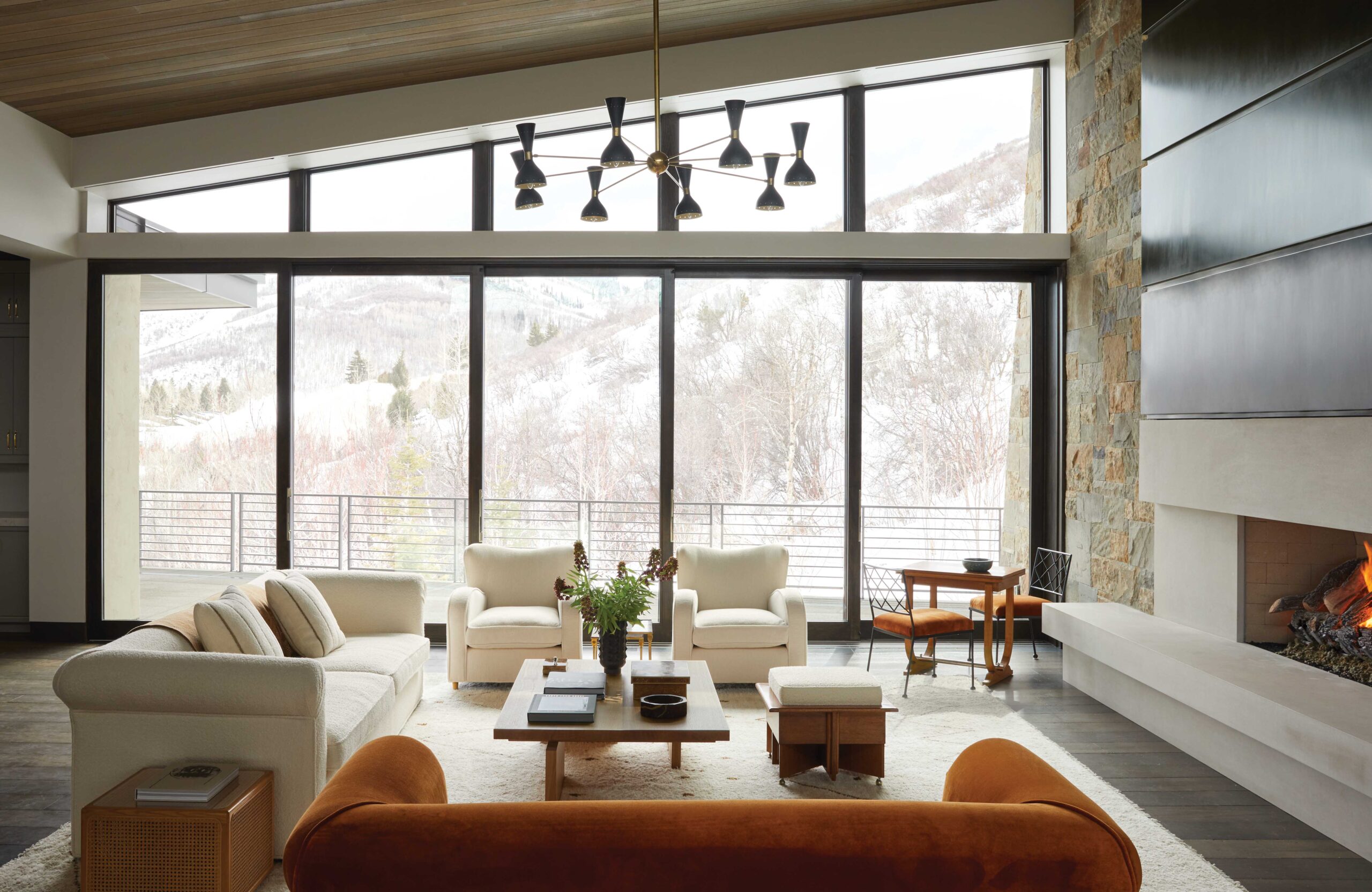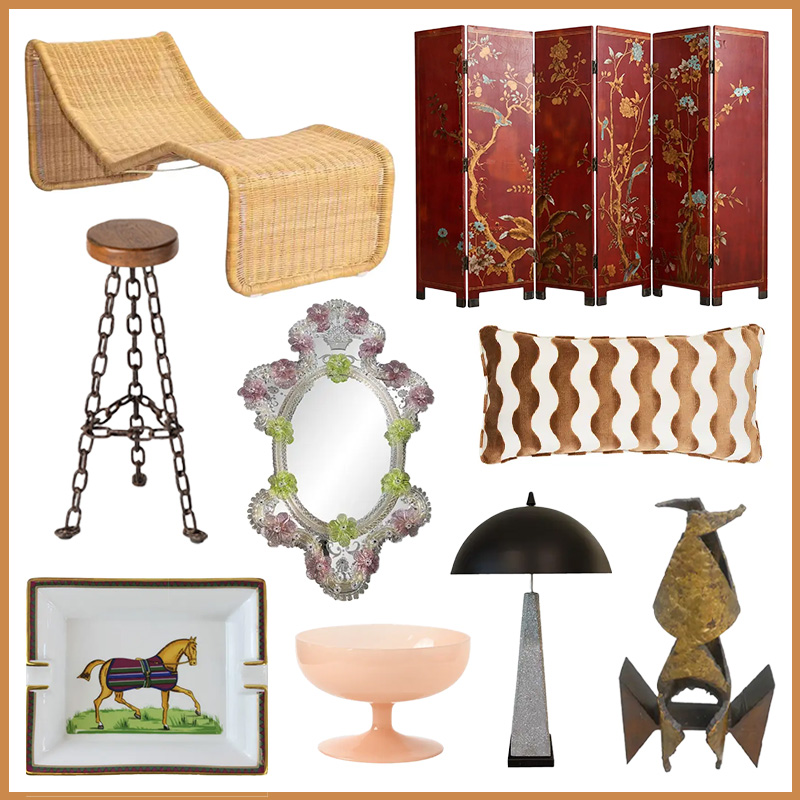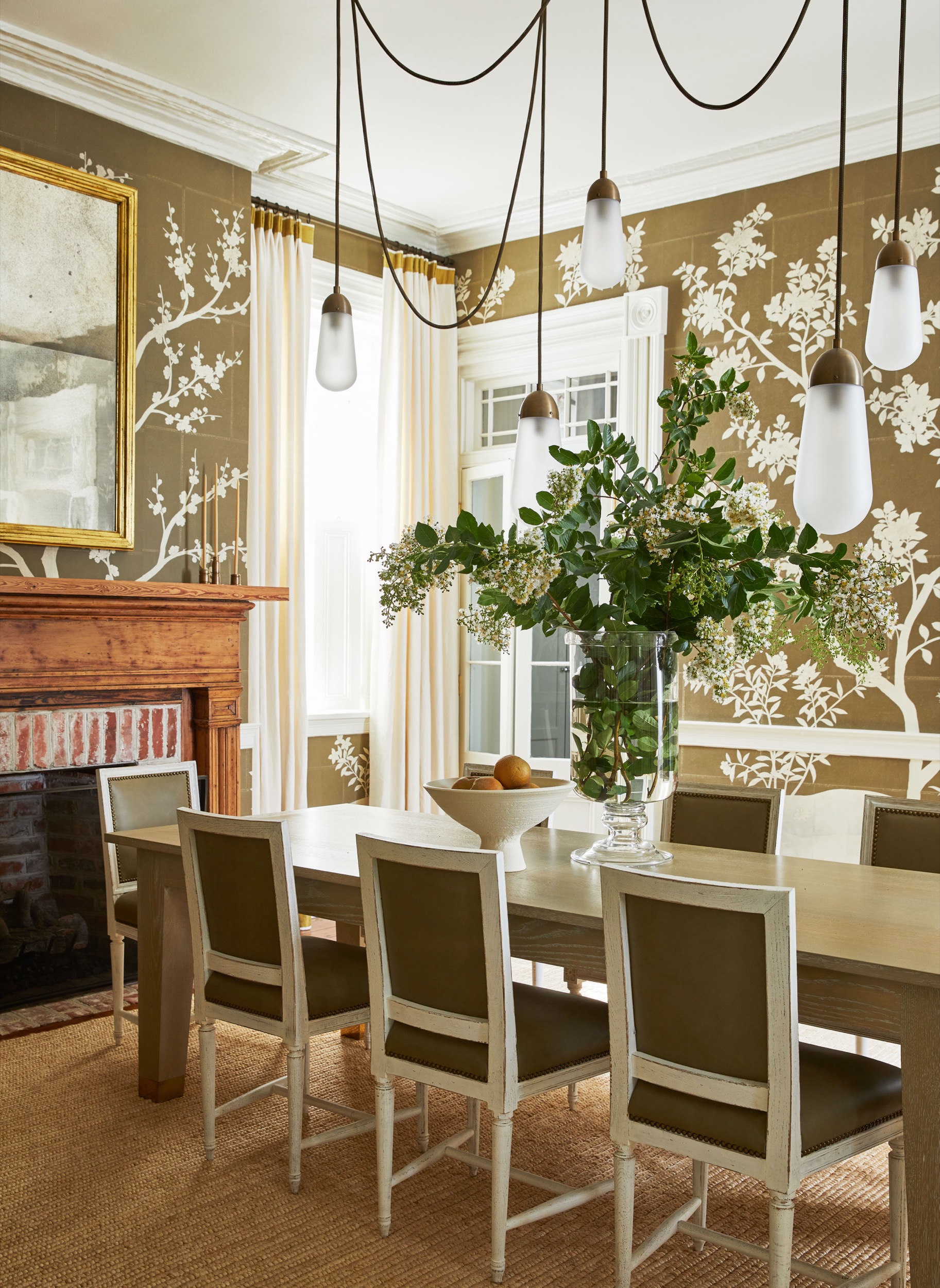Not long before Stephen Earle’s home became his, there were plans afoot to take the wrecking ball to it—to build a parking lot. The Greek Revival, one of the last with an original attached barn in this coastal village, escaped such a sorry fate thanks to the perseverance of local residents. To demolish it, they argued, would be to lose forever a piece of the town’s soul.
-

“You can’t be in Maine and not absorb the idea that reusing and making do is what gives a house character,” says Earle, who committed to using furniture he already had before adding anything new. He acquired the rug in a trade with a neighbor.
MAURA McEVOY -

The dining room pendant is symbolic of the use-what-you-have approach Earle took to the interiors: He drilled a hole in a gilded wall plaque to make a canopy, hung a 1960s globe light from an old chain, then surrounded it with a basket-turned-lampshade.
MAURA McEVOY
Instead, they gained a steward in Earle, a native Michigander whose compass has been pointing toward Maine for the better part of forty years, since his college days in New England and throughout his professional life in New York City. The interior architect and designer, whose reverence for house and home spans fourteen different dwellings into which he has poured his heart and soul, cites the one thing that has remained a constant throughout. “I have been moving five boxes labeled ‘For a House in Maine’ from one place to the next for the last four decades. I just could never get rid of them.”
-
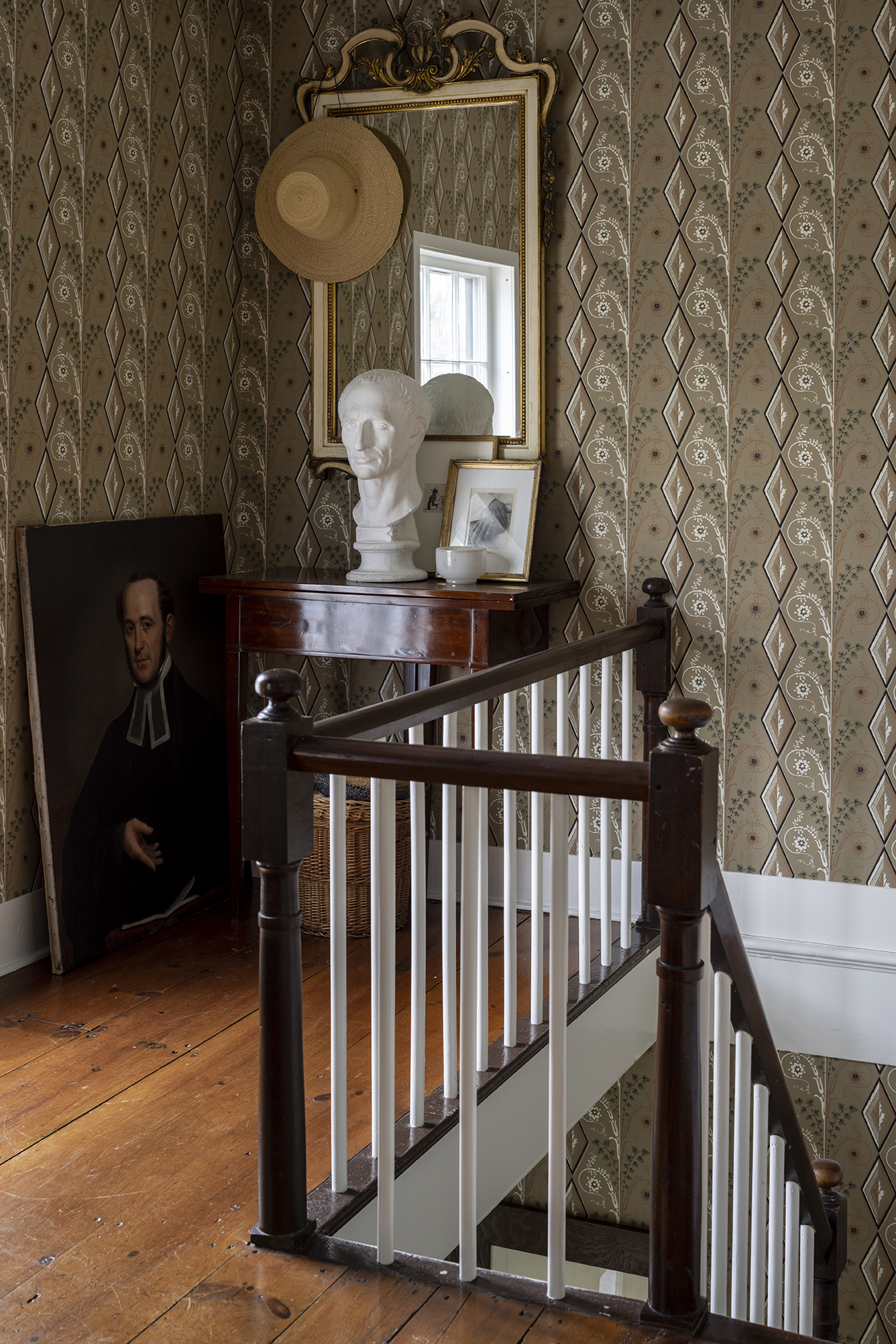
Earle had been carrying around a swatch of this wallpaper, a 19th-century pattern, for 40 years before he found an ideal space to hang it.
MAURA McEVOY -

How to make a 1930s grisaille painting and an intricately carved coffee table work in a Maine house? Throw a sheet over the sofa and create make-do lighting by clipping a lamp to a vintage floor lamp stand.
MAURA McEVOY
It was while visiting friends on the Midcoast, where a lobster feast in a house overlooking the harbor brought him straight back to his childhood on Michigan’s Upper Peninsula, that Earle felt he had come full circle. Indeed, while he was looking around the house—peeking into rooms papered over in pink flowers with plush pink carpet underfoot—the very distracted owner turned to him and said, “I don’t know who you are, but the way you are looking at this house, I think you are going to live here.” Earle likes to say that if he were turned into a house, it would be this one. “It’s like a suit that fits perfectly.”
It took some convincing to get his partner, Mitchell Gross, to feel the same. Why own a house an eight-hour drive away? Why not just visit occasionally? But after several visits himself, the born-and-bred New Yorker got it. “He saw just how of this place I feel. It’s not enough to simply be in a place,” says Earle. It wasn’t just Gross who wondered whether it made sense. Friends cocked their heads in dismay, every one asking him how often he gets here. Which, for Earle, is beside the point. “I’m here every single day in my mind. It is home with a capital H.”
-
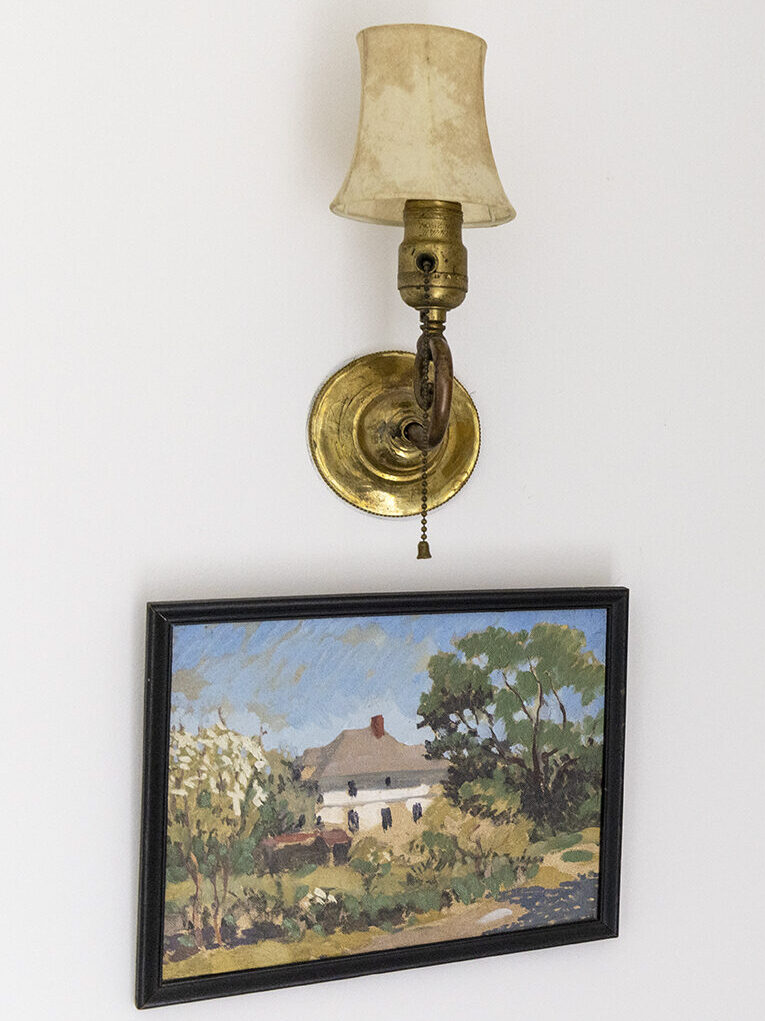
An orphaned sconce purchased long ago at a flea market and a mirror bought for a photo shoot: Earle found a place in the house for pieces he had been stashing over a lifetime.
MAURA McEVOY -
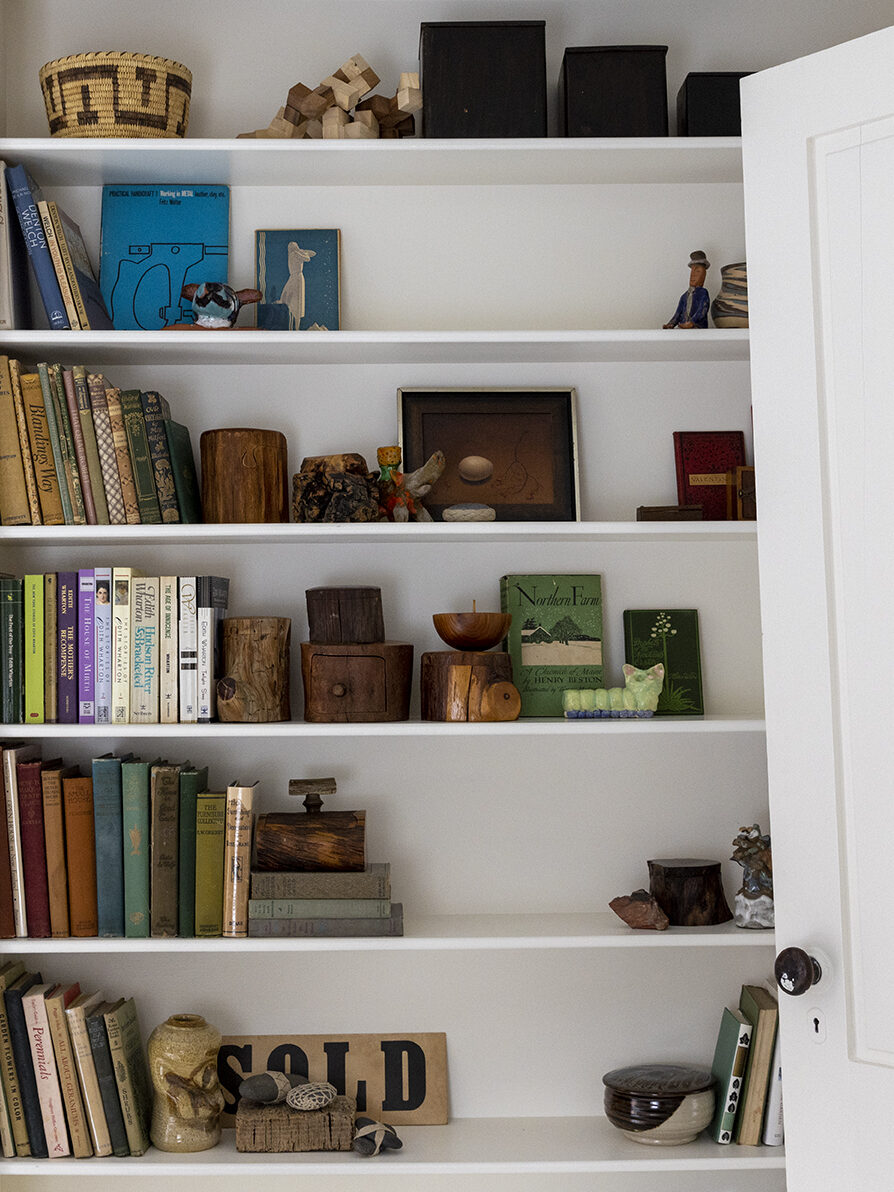
Earle had no trouble finding a use for the shallow built-in shelves in the guest bedroom. “It’s just a tableau of things that I like,” he says of the wooden-box collection and books with compelling covers.
MAURA McEVOY
This story first appeared in The Maine House II: Inland, Inshore and On Islands (Vendome) by Maura McEvoy, Basha Burwell, and Kathleen Hackett. Pick up a copy of the book to see more inspiring homes!
$60, bookshop.org
